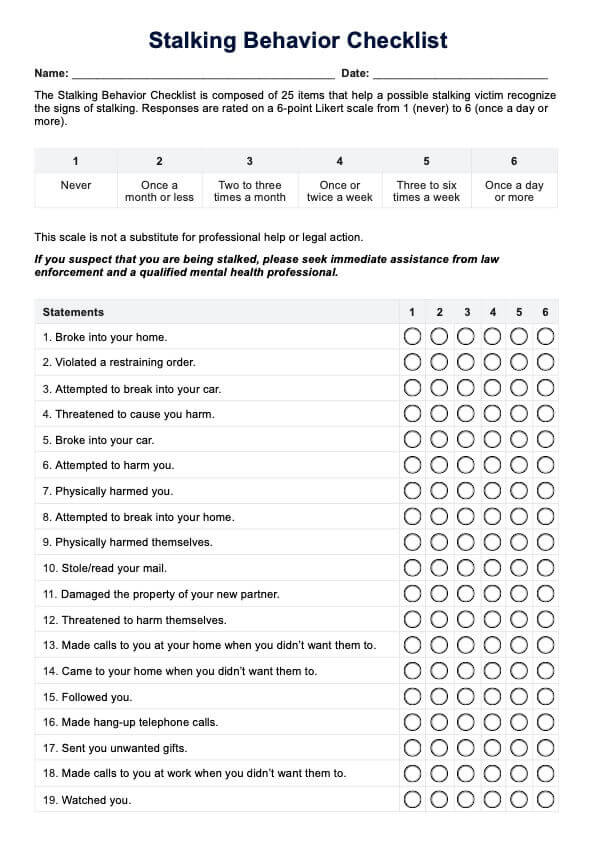The most common type of stalking is intimate partner stalking, where the perpetrator is a current or former partner of the victim.

Stalking Behaviour Checklist
Download a free Stalking Behaviour Checklist PDF to help identify patterns of stalking. Learn common signs and steps for safety and legal support.
Use Template
Stalking Behaviour Checklist Template
Commonly asked questions
Signs of stalking include repeated unwanted contact, following, spying, sending unsolicited gifts, and attempting to or successfully invading the victim's personal space.
Common stalking behaviors include making repeated phone calls, sending unwanted messages or gifts, following the victim, and appearing uninvited at the victim's home or workplace.
EHR and practice management software
Get started for free
*No credit card required
Free
$0/usd
Unlimited clients
Telehealth
1GB of storage
Client portal text
Automated billing and online payments











